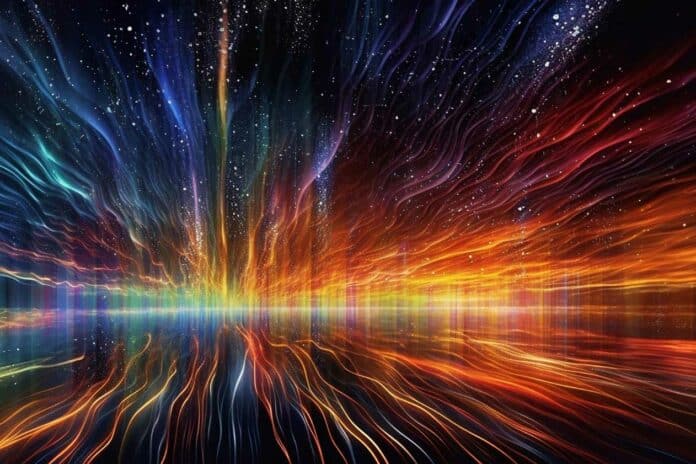Small subatomic particles known as neutrinos have weak interactions and can travel astronomical distances unaltered. Astrophysical neutrinos, or high-energy neutrinos that come from the furthest reaches of our galaxy are the primary focus of research for the IceCube Neutrino Observatory, a neutrino telescope at the South Pole sized like a cubic kilometer.
A new era in astronomy began in 2013 when IceCube revealed the first proof of high-energy astrophysical neutrinos coming from cosmic accelerators. The IceCube Collaboration has now reported finding a new type of astrophysical messenger, the once-elusive tau neutrino.
The collaboration has detected the exotic ghost particles using cables (strings) of digital optical modules (DOMs), 5,160 of which are embedded deep within the Antarctic ice.
Charged particles are created when neutrinos interact with ice molecules. These particles then move through the ice and emit blue light, which is detected and recorded by the individual DOMs. The light produces two unique patterns: high-energy tau neutrino interactions within the detector result in double cascade events.
The researchers were nevertheless driven to identify tau neutrinos since previous IceCube investigations had found indications from searches for faint signals generated by astrophysical tau neutrinos. After rendering each event into three images, they trained convolutional neural networks (CNNs) tuned for image classification to identify images produced by tau neutrinos from those produced by different backdrops.
Simulators were used to validate the technique’s sensitivity to tau neutrinos before it was applied to ten years of IceCube data collected between 2011 and 2020. Seven strong candidate tau neutrino events were the outcome.
Doug Cowen, a professor of physics at Penn State University and one of the study leads, said, “The detection of seven candidate tau neutrino events in the data, combined with the meager amount of expected background, allows us to claim that it is doubtful that backgrounds are conspiring to produce seven tau neutrino imposters. The discovery of astrophysical tau neutrinos also strongly confirms IceCube’s earlier discovery of the diffuse astrophysical neutrino flux.”
Cowen stated that there was less than a one in 3.5 million probability that the background would appear to be the signal.
This study only employed three of IceCube’s strings; more will be used for analysis in the future. This will enable a more significant sample of tau neutrinos for the first investigation of neutrino oscillations involving all three flavors of neutrinos at long distances. This work may contribute to understanding the properties of the space that neutrinos move through and how astrophysical sources produce them.
No particular instrument exists to determine tau neutrinos’ energy and spin direction that is responsible for the patterns observed in this investigation. The development of such a tool could aid in the real-time identification of probable tau neutrinos at the South Pole and assist in separating them from background noise. Alerts regarding tau neutrinos may be transmitted to the scientific community for more research, similar to how IceCube now notifies scientists of other neutrino forms.
Journal Reference:
- The IceCube Collaboration: R. Abbasi et al. Observation of Seven Astrophysical Tau Neutrino Candidates with IceCube. Physical Review Letters. arxiv.org/abs/2403.02516
